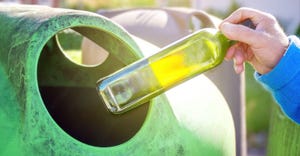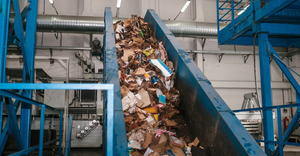“Curbing” Curbside Recycling Costs and Boosting Recovery
No one underestimates Americans’ desire to recycle. A national survey completed by Keep America Beautiful revealed that 76 percent of respondents said they make an effort to do it.
What remains a challenge, however, is Americans’ ability to recycle correctly.
So there is a push to make the process easier to understand and accomplish, especially as municipalities’ diversion goals rise and commodities’ values mainly lay low.
Solid waste management professionals are taking a long, hard look at messaging, different curbside collection methods and cost of those methods to collectors, processors and municipalities.
Nonprofit Keep America Beautiful (KAB) is working with partners to standardize and simplify recycling messaging—and to make it stick. They’ve made a discovery: leveraging both emotion and basic information are a powerful combination. For example, its I Want to be Recycled website has attracted over 3 million visitors for its information on what to recycle and how to do it.
“What resonated most was that through their actions they could give [material] a new life,” says Brenda Pulley, senior vice president, recycling, for KAB.
I Want to be Recycled videos, quick vignettes in English and Spanish, show different materials’ going through journeys. In one video, a plastic bottle rolling across the country tells viewers, “They called me a piece of trash and were sure that was all I’d ever be … [but] … everyone has a dream; mine was to see the ocean.” Eventually a hand picks the bottle up and places it in a receptacle—followed by a closing shot: a bench made of recycled plastic bottles overlooking the Pacific.
“Showing people the transformation that can happen when they recycle was pivotal,” Pulley says. “They didn’t feel it was a burden, but saw it as a responsibility.”
Communities around the country are disseminating the nonprofit’s public education materials, even wrapping their creative materials around the sides of recycling trucks.
Meanwhile, KAB is working with partners to color code organics recycling bins and identify effective icons and words for all receptacle types. The goal is to devise messaging that is simple and uniform.
The curbside recycling programs of the 1970’s were motivated largely by paper mills that saw value in newspaper as feedstock to make newsprint. As it became clear there was money in other materials, multiple-bin systems evolved, collecting metals and glass too.
But the system got complicated and expensive. Governments wanted higher recycling rates and haulers’ complained about their rising costs, so came single-stream models.
The transition had unintended consequences, shifting costs from collection to processing as well-meaning consumers tossed more in the bin that didn’t belong there.
Contamination rates climbed. Crushed glass and dirty plastics gummed up MRFs’ equipment and mechanical sorters that distinguished by dimension were pulling flattened cans in with paper. Quality control continued to plummet as processors exploited a sellers’ market, shipping inferior materials rather than straightening consumers out, says Chaz Miller, director of policy/advocacy for the National Waste & Recycling Association (NWRA).
The trend has come full circle.
“Buyers are pickier and we need to be pickier about what we collect at the curbside,” he says.
West Springfield, Mass., is clamping down with an automated single- stream system. Their April 2013 transition from manual dual stream and unlimited trash collections seems to be working, despite initial pushback from residents who didn’t want to have to cram their trash into single 64-gallon carts.
“But we said you will get one 96-gallon recycling cart rather than two little bins,” says Rob Colson, West Springfield’s director of Public Works, adding the change also put an end to the windblown trash that was littering their streets. “They liked the space and that the bins were covered so they could put them outside regardless of the weather.”
For the town’s decision makers the sell was higher diversion rates and lower tipping fees, which all four contractors they talked to told them to expect. They get less per ton of materials but spend less on carts and haulers’ labor.
The challenge, as with any new system, is logistics– namely matching numbered carts to addresses.
“You also need enforcement because now we can’t see what’s inside the carts,” says Colson, whose department now opens recycling receptacles.
When there are violations they put stickers on carts and they leave them filled at the curb. The town has not fined citizens but has an ordinance provision in the wings to allow up to a $100 penalty.
“The theory is to educate first; residents really just need to understand,” he says. “If we can’t change behaviors and we think this will be a small group, we will fine.”
Miller, Pulley and Colson will dig deeper into curbside recycling in a WasteExpo 2016 session entitled: Recycling Super Session: Curbside Recycling & Public Education Programs from 2:00 p.m. to 4:15 p.m. June 6. They will be joined by Cody Marshall from the Recycling Partnership.
About the Author
You May Also Like




